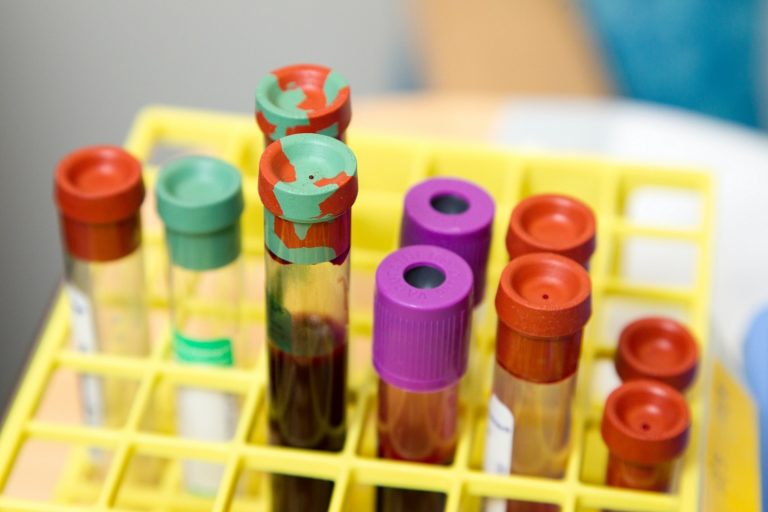July 29, 2021: “GlaxoSmithKline announced that the FDA has approved Nucala (mepolizumab), a monoclonal antibody that targets interleukin-5 (IL-5), as a treatment for patients with chronic rhinosinusitis with nasal polyps (CRSwNP).
This new indication for mepolizumab is for the add-on maintenance treatment of CRSwNP in adult patients 18 years of age and older with inadequate response to nasal corticosteroids.
CRSwNP accounts for 2-4% of the US population, affecting more than 5 million people.
CRSwNP is one of a variety of diseases arising from inflammation in different tissues associated with elevated levels of a type of white blood cell called eosinophils.
It is often characterised by raised eosinophil levels, in which soft tissue growth, known as nasal polyps, develop in the sinuses and nasal cavity.
CRSwNP can cause chronic symptoms such as nasal obstruction, loss of smell, facial pressure and nasal discharge.
Mepolizumab is the first anti-IL-5 biologic to be approved for adult patients with CRSwNP in the US.
Dr. Hal Barron, Chief Scientific Officer and President R&D, GSK said: “More than 5 million people in the US suffer with chronic rhinosinusitis with nasal polyps and today’s approval provides these patients with the first anti-IL-5 treatment option and an alternative to surgery to help reduce symptoms of this disease.
GSK is committed to exploring the role of IL-5 inhibition in eosinophil-driven diseases to help address unmet needs of patients.”
Tonya Winders, CEO & President, Allergy and Asthma Network (AAN) and President of Global Allergy and Airways Patient Platform (GAAPP) commented: “Patients with chronic rhinosinusitis with nasal polyps experience unpleasant symptoms across a range of severities.
As there have been limited treatment options, particularly for those patients with severe disease, they may rely on oral steroids and recurrent surgery to manage their condition.
We welcome the news that mepolizumab will now offer appropriate patients and healthcare providers a novel treatment option and alternative to surgery.”
The approval of mepolizumab as a treatment for CRSwNP is based on data from the pivotal SYNAPSE study which explored the effect of mepolizumab vs. placebo in over 400 patients with CRSwNP.
Mepolizumab achieved significant improvement in reducing the size of nasal polyps and nasal obstruction.
All patients in the study received standard care, had a history of previous surgery (approximately one in three had ≥3 surgeries) and were in need of further surgery due to severe symptoms and increased size of their polyps.
SYNAPSE showed that there was a 57% reduction in the proportion of patients who had surgery in the group treated with mepolizumab vs. placebo, HR=0.43 (95% CI 0.25, 0.76).
In addition, the proportion of patients requiring systemic corticosteroid use during the 52-week treatment period was lower in patients who received mepolizumab.
Mepolizumab is also approved for use in three other eosinophilic driven diseases, the first indication being for patients with severe eosinophilic asthma aged six years and older. Additionally, mepolizumab was the first biologic therapy indicated for adults with eosinophilic granulomatosis with polyangiitis (EGPA) and also the first biologic to be approved for patients aged 12 years and older with hypereosinophilic syndrome (HES).
With 41 clinical trials, mepolizumab has been studied in over 4,000 patients. GSK is committed to improving the lives of those living with disease associated with uncontrolled eosinophilic inflammation, continuously innovating in order to address the unmet needs in this broad patient group.
Nucala is indicated in the US:
- As an add-on maintenance treatment of adult and pediatric patients aged 6 years and older with severe asthma and with an eosinophilic phenotype. Nucala is not indicated for the relief of acute bronchospasm or status asthmaticus.
- For the treatment of adult patients with EGPA.
- For the treatment of adult and paediatric patients aged 12 years and older with HES for ≥6 months without an identifiable non-hematologic secondary cause.
- As an add-on maintenance treatment of CRSwNP in adult patients 18 years of age and older with inadequate response to nasal corticosteroids.
About chronic rhinosinusitis with nasal polyps (CRSwNP)
CRSwNP is a chronic inflammatory disease of the nasal passage linings or sinuses which can lead to soft tissue growths known as nasal polyps and is often characterised by elevated levels of eosinophils. The resultant swellings can grow in both nostrils (bilateral) greatly impacting a patient due to various symptoms including nasal obstruction, loss of smell, facial pressure and nasal discharge. Surgery may be indicated for severe cases. However, polyps have a strong tendency to reoccur often leading to repeat surgery.
About mepolizumab
First approved in 2015 for severe eosinophilic asthma (SEA), mepolizumab is the first-in-class monoclonal antibody that targets IL-5. It is believed to work by preventing IL-5 from binding to its receptor on the surface of eosinophils, reducing blood eosinophils and maintaining them within normal levels.
A normal level of blood eosinophils being less than 500 eosinophils/microliter. The mechanism of action for mepolizumab has not been definitively established.
Mepolizumab has been developed for the treatment of diseases that are driven by inflammation caused by eosinophils.
It has been studied in over 4,000 patients in 41 clinical trials across a number of eosinophilic indications and has been approved under the brand name Nucala in the US, Europe and in over 20 other markets, as an add-on maintenance treatment for patients with SEA.
It is approved for paediatric use in SEA from ages six to 17 in Europe, the US and several other markets.
In the US, Japan, Canada and a number of other markets, it is approved for use in adult patients with EGPA. Mepolizumab was approved for use in HES in the US in September 2020, followed by Brazil in February 2021 and Argentina in May 2021.
Mepolizumab is currently being investigated in COPD. It is not currently approved for use in COPD anywhere in the world.”












